- News
- Reviews
- Bikes
- Accessories
- Accessories - misc
- Computer mounts
- Bags
- Bar ends
- Bike bags & cases
- Bottle cages
- Bottles
- Cameras
- Car racks
- Child seats
- Computers
- Glasses
- GPS units
- Helmets
- Lights - front
- Lights - rear
- Lights - sets
- Locks
- Mirrors
- Mudguards
- Racks
- Pumps & CO2 inflators
- Puncture kits
- Reflectives
- Smart watches
- Stands and racks
- Trailers
- Clothing
- Components
- Bar tape & grips
- Bottom brackets
- Brake & gear cables
- Brake & STI levers
- Brake pads & spares
- Brakes
- Cassettes & freewheels
- Chains
- Chainsets & chainrings
- Derailleurs - front
- Derailleurs - rear
- Forks
- Gear levers & shifters
- Groupsets
- Handlebars & extensions
- Headsets
- Hubs
- Inner tubes
- Pedals
- Quick releases & skewers
- Saddles
- Seatposts
- Stems
- Wheels
- Tyres
- Health, fitness and nutrition
- Tools and workshop
- Miscellaneous
- Cross country mountain bikes
- Tubeless valves
- Buyers Guides
- Features
- Forum
- Recommends
- Podcast
review
£875.00
VERDICT:
Light, fast, and practical urban bike that is also comfortable and fun to ride
Weight:
9,400g
Contact:
www.giant-bicycles.com
At road.cc every product is thoroughly tested for as long as it takes to get a proper insight into how well it works. Our reviewers are experienced cyclists that we trust to be objective. While we strive to ensure that opinions expressed are backed up by facts, reviews are by their nature an informed opinion, not a definitive verdict. We don't intentionally try to break anything (except locks) but we do try to look for weak points in any design. The overall score is not just an average of the other scores: it reflects both a product's function and value – with value determined by how a product compares with items of similar spec, quality, and price.
What the road.cc scores meanGood scores are more common than bad, because fortunately good products are more common than bad.
- Exceptional
- Excellent
- Very Good
- Good
- Quite good
- Average
- Not so good
- Poor
- Bad
- Appalling
Giant's Mini 0 is a small-wheeled bike that you might expect to fold, but which doesn't. That might seem like a mark against it but as Alex Moulton has been demonstrating since back in the Sixties small wheeled bikes do not need to fold to earn their place.
When we first looked at it we did put a question mark over the centre point of the frame where two small stiff triangles are joined at one point. However, on closer examination and after speaking to the Mini 0's designer, Joe Chou, it is apparent that that point is much stronger than it looks.
For a start it is not four separate tubes joined at one point, but one continuous top tube, braced top and bottom by an interrupted down tube. On top of that the tube section changes slightly where more strength is needed and it is thicker too. According to Joe the Mini Zero fram can take over 900Kg static loading with the seat at the highest position.

The Mini 0 was designed with the Japanese market in mind. Space is at a premium in cities like Tokyo, so storage is an issue for a lot of cyclists. No surprise that folding bikes are big over there, but so are performance small wheelers like the Moulton. Where Giant looked to score with the Mini 0 was in providing a light, fast and comfortable bike for the style conscious rider that is also easy to stow. It worked. The Mini 0 is a small bike that is big in Japan.


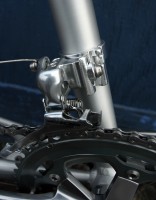
So how does it stack up over here? Well, there's no doubt that it is a blast to ride those small wheels make for lightning fast acceleration and it is nimble too – ideal for diving through traffic. The combination of Shimano 105 front and rear mechs, and 10 speed 11-23 cassette, chain, matched up to a 52-39 Shimano105 Hollowtech chainset will get you up anything – it certainly coped with hilly Bath no problem and in flatter cities like London a 53 wouldn't be out of place. Handling is light and responsive without being skittish – this really is a pleasurable bike to ride. The only downside are the frankly woeful brakes – I adjusted them more than once put still found myself hauling the levers in until they touched the bars. My guess is that this was a cable pulling issue and was probably a complicated by the bar set-up.

A vast length of exposed carbon post makes for a very comfortable ride, while the stiffness of the aluminium frame makes for very efficient power transfer – further boosting the nippiness of those small wheels. Your position on the bike is vastly tuneable thanks to a very generous stack of headset spacers and those eye-catching stoker bars which lend themselves to any number of positions. You really could play with the set-up forever on this baby.
At 9.4Kg (a nudge under 21lb) it's comfortably lighter than bikes like the Cannondale Hooligan or the Dahon Cadenza – not direct competitors possibly, (neither have any gears for a start), but certainly trying to occupy a similar niche. One bike it could be said to be competing with is the Pashley Moulton TSR8 – the Mini 0 is almost 7lb lighter than that.
That light weight makes it easy to carry up and down stairs, and it doesn't take up much space either especially if you turn the front wheel around so that the bars are facing inwards. Okay you can't fold it up to jump on a bus, but you could get it into the boot of your car fairly easily – provided it has a fairly big boot.

For full on practicality there would be an argument for a chainguard and mudguards – it's not as if they are going to get in the way of the fold. But Giant are going for minimalist urban cool here – and they have sold a lot of Mini 0s – in a very rainy country … and you could fit guards if you wanted to.
There is a cheaper version of the Mini 0, the Mini 1 with a downgraded spec, but Giant are also possibly missing a trick by not offering a single speed version. Even in hilly Bath I managed to ride around in either top gear or the next one down and in a flatter city it would be even easier too. And a light bike would get even lighter.
Verdict
Light, fast, and practical urban bike that is also comfortable and fun to ride
road.cc test report
Make and model: Giant Mini Zero
Price: 875.00
Weight: 0g
Size tested: n/a
About the bike
State the frame and fork material and method of construction. List the components used to build up the bike.
Frame: TIG welded Aluxx Aluminium
Fork: Aluminium rigid
Handlebar: Low profile stoker bar
Stem: Aluminium ahead
Seat post: Aluminium
Saddle: GIANT own brand
Pedals: Stainless steel axle, steel cage
Shifters: Shimano 105 20 speed STI
Front mech: Shimano 105
Rear mech: Shimano 105
Brakes: Dual pivot long reach
Brake levers: Shimano 105 STI
Cassete: Shimano 105 11-23
Chain: Shimano 105
Cranks: Shimano 105 Hollowtech II 39/52
Bottom bracket: Shimano 105 Hollowtech II
Rims: Alex A-Class Folex 20"
Hubs: Alex A-Class Folex
Spokes: Black stainless steel
Tyres: Kenda 20x1.5"
Tell us what the bike is for, and who it's aimed at. What do the manufacturers say about it? How does that compare to your own feelings about the bike?
Primarily aimed at space conscious urban riders that want a practical bike, that's fun to ride and doesn't take up much weight
Frame and fork
Overall rating for frame and fork
8/10
Tell us about the build quality and finish of the frame and fork?
Our fears about the central point at which the two small, strong front and rear triangles meet have been answered by designer Joe Chou. All the welds certainly look strong and which without putting the bike on a test rig is about all you can say about them.
The frame finish combines a certain stylishness with functionality - the satin paintwork remaining unmarked through the test period.
Tell us about the materials used in the frame and fork?
Oversized aluminium, light, strong, stiff, and should be very durable too. That stiffness is mitigated by the vasto carbon seat post which adds a bit of cush to the ride.
Tell us about the geometry of the frame and fork?
Geometry is fairly relaxed, but handling is sharp too
How was the bike in terms of height and reach? How did it compare to other bikes of the same stated size?
The Mini 0 comes in one size only 42cm, that said it was extremely tuneable in terms of height and reach. Although I think anyone over 6ft 2in might start to have problems.
Riding the bike
Was the bike comfortable to ride? Tell us how you felt about the ride quality.
A very comfortable machine, all that seat post and the opportunity to fiddle with the postion makes for a very comfortable ride. It's comfortable enough to contemplate longer days in the saddle - although you might then find yourself hankering after a proper set of drop bars.
Did the bike feel stiff in the right places? Did any part of the bike feel too stiff or too flexible?
Yep, stiff in the right places. It felt spot-on
How did the bike transfer power? Did it feel efficient?
Yes it did. Small wheeled bikes are aways going to feel fairly direct especially in situations like accelerating away from the lights or a junction and the Giant Mini 0 was no exception.
Was there any toe-clip overlap with the front wheel? If so, was it a problem?
I didn't suffer any problems
How would you describe the steering? Was it lively, neutral or unresponsive? Just on the lively side of neutral
Tell us some more about the handling. How did the bike feel overall? Did it do particular things well or badly?
Very good at all aspects of riding in a city, changing direction quickly to move in and out of traffic, acceleration. Potholes and rough roads are more of a potential issue for a small wheeled bike, but this was nimble enough to either take evasive action, or jump the offending bump or hole. If neither of these was possible the combination of a long carbon seat post and those Kenda tyres were good at absorbing road shocks.
Again, cornering, descending, no problem - you do have to get used to the fact that much more of the weight of the bike is lower down, well I did, but it's not worse than a bigger framed bike just different.
The only downside to the bike's handling are those brakes - they are pretty rubbish, they will stop you but they are all modulation and not enough power. Single speed with discs would be good!
Which components had the most effect (good or bad) on the bike's comfort? would you recommend any changes?
As already mentioned the combination of the Kenda tyres and that long carbon seat post contribute massively to the overall comfort of the Mini 0
Which components had the most effect (good or bad) on the bike's stiffness? would you recommend any changes?
It'sll all down to the frame - I would say it is plenty stiff enough.
Which components had the most effect (good or bad) on the bike's efficiency? would you recommend any changes?
That stiff frame, those small wheels make for a pretty efficient unit
Rate the bike for efficiency of power transfer:
8/10
Rate the bike for acceleration:
9/10
Very nippy indeed
Rate the bike for high speed stability:
8/10
You'll beat anybody over the first 10 yards, if not the last
Rate the bike for cruising speed stability:
7/10
It'll cruise along happily for as long you want, the handling is slightly livelier than a bigger wheeled bike but not enough to irritate or unnerve
Rate the bike for low speed stability:
8/10
Rate the bike for flat cornering:
8/10
Rate the bike for cornering on descents:
7/10
The only slight wrinkle are the brakes - still good though
Rate the bike for climbing:
9/10
It's light, it's got plenty of gears, it'll go up anything
The drivetrain
Rate the drivetrain for performance:
8/10
Performed well, might be a tad under-geared for flatter terrain
Rate the drivetrain for durability:
8/10
Rate the drivetrain for weight:
8/10
Pretty good for the money
Rate the drivetrain for value:
8/10
See above
Wheels and tyres
Rate the wheels and tyres for performance:
8/10
Rate the wheels and tyres for durability:
8/10
As much as you can comment after a relatively short test, small wheels tend to be strong and nothing in the way these performed suggested otherwise
Rate the wheels and tyres for weight:
7/10
Rate the wheels and tyres for comfort:
8/10
Rate the wheels and tyres for value:
7/10
Tell us some more about the wheels and tyres.Did they work well in the conditions you encountered? Would you change the wheels or tyres? If so, what for?
No complaints about either, if I was gong to change anything I might be tempted to experiment with tyre choice, but only when this lot wore out. Schwalbe do some very well regarded 20in tyres which might be worth a go.
Controls
Rate the controls for performance:
6/10
Tricky to mark the controls overall - I liked the bars and levers, I didn't like the brakes
Rate the controls for durability:
7/10
Rate the controls for weight:
8/10
Rate the controls for comfort:
8/10
Rate the controls for value:
7/10
Tell us some more about the controls. Any particularly good or bad components? How would the controls work for larger or smaller riders?
As I've said, I liked the bars and levers but I didn't rate the performance of the brakes.
Anything else you want to say about the componentry? Comment on any other components (good or bad)
Taller riders might struggle with the on size fits all riding position
Your summary
Did you enjoy riding the bike? Yes
Would you consider buying the bike? If I was in the target market
Would you recommend the bike to a friend? Yes
Anything further to say about the bike in conclusion?
I really liked the Mini Zero a bike to confound expectations. I'd love to try a single speed version with better brakes
About the tester
Age: 46 Height: Weight:
I usually ride: Ridgeback Genesis Day 03 My best bike is: Whatever I'm testing at the moment
I've been riding for: Over 20 years I ride: Every day I would class myself as: Experienced
I regularly do the following types of riding: commuting, sportives, general fitness riding,
road.cc's founder and first editor, nowadays to be found riding a spreadsheet. Tony's journey in cycling media started in 1997 as production editor and then deputy editor of Total Bike, acting editor of Total Mountain Bike and then seven years as editor of Cycling Plus. He launched his first cycling website - the Cycling Plus Forum at the turn of the century. In 2006 he left C+ to head up the launch team for Bike Radar which he edited until 2008, when he co-launched the multi-award winning road.cc - finally handing on the reins in 2021 to Jack Sexty. His favourite ride is his ‘commute’ - which he does most days inc weekends and he’s been cycle-commuting since 1994. His favourite bikes are titanium and have disc brakes, though he'd like to own a carbon bike one day.
Latest Comments
- Born_peddling 3 sec ago
Similar incident happened to another couple that was in the news early last year, instead of it being a cycle rack this person concealed themselves...
- David9694 5 min 2 sec ago
A fierce row at the heart of Reform UK - what's going on?...
- David9694 10 min 2 sec ago
Even if the guy gets this a lot, it's still worth my being the 940th person to note that it's Cllr De'Ath overseeing a whopping four roads in...
- don simon fbpe 17 min 57 sec ago
Either way, got to be better than being a professional prick.
- Rendel Harris 2 hours 10 min ago
It was a bit more complex than that I think, the Badger had already been suffering from tendonitis for quite some time before (many said due to his...
- quiff 1 hour 21 min ago
That's going to make life needlessly difficult when I want to (perfectly legitimately) filter through traffic or indeed get through my front door...
- Bmblbzzz 3 hours 54 min ago
Where are Zebedee and Ermintrude when you want them?
- Steve K 4 hours 7 min ago
Update on this: apparently it's all their Ti frames ever, except the HT Ti (no, no idea why). However, it's not transferable.
- Oldfatgit 4 hours 40 min ago
Cough *plotaroute.com*






















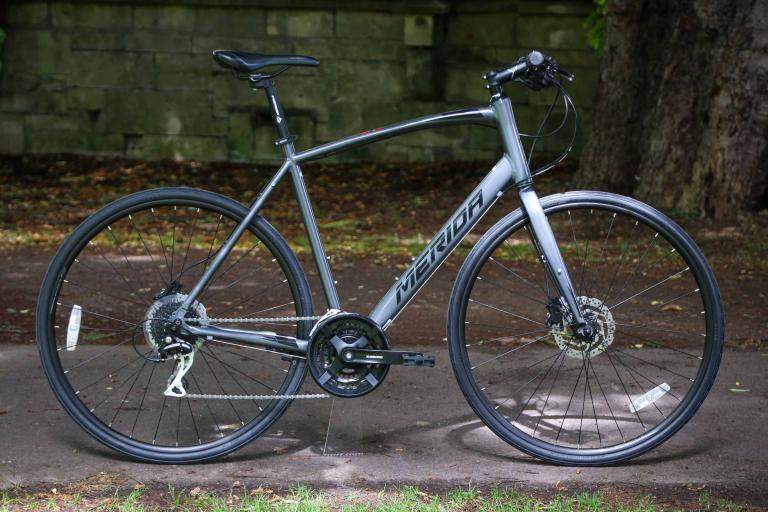
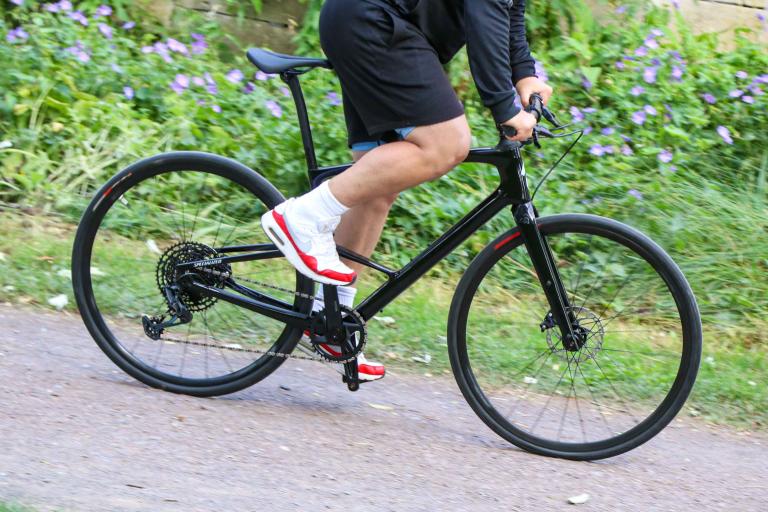
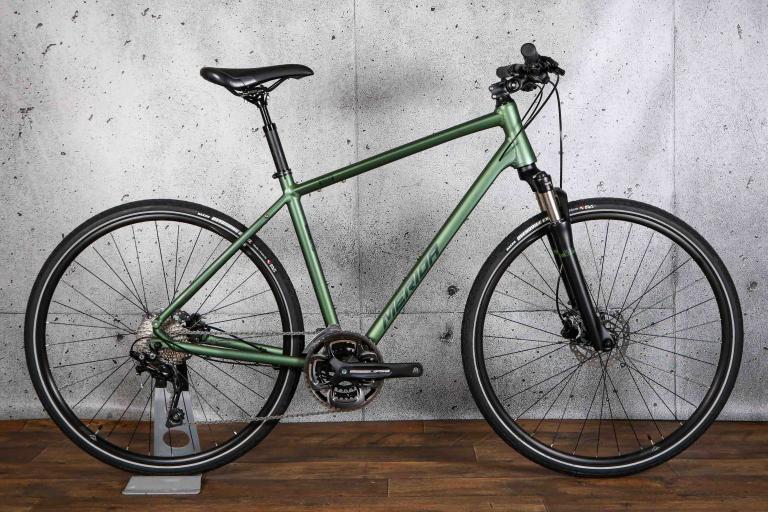
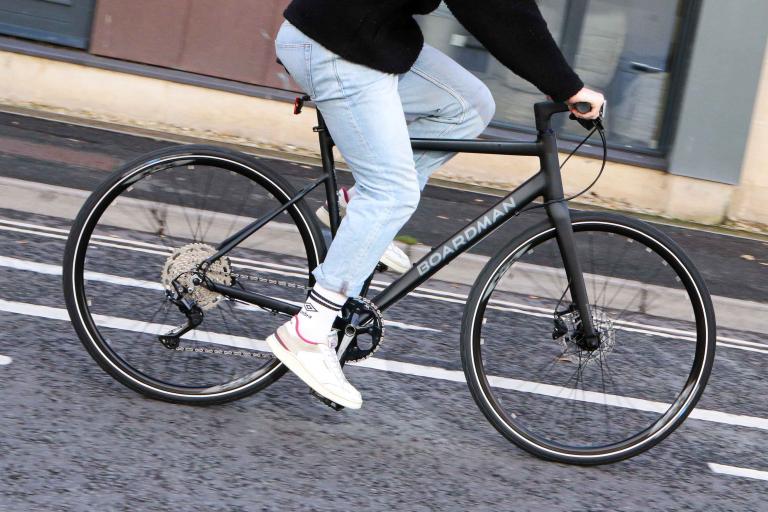
Add new comment
4 comments
I think your problem would still be that to cope with the rougher stuff you'd need to fit a knobblier tyre - which would then be slower on the tarmac. So maybe the FCR would be a better bet, likewise discs would be great on the Zero, but retro-fitting isn't really an option. I would probably go for the FCR for the types of conditions you describe - I ride my Ridgeback Genesis on the towpath with road tyres over looser surfaces and through the odd bit of mud and it copes just fine.
Before you get another bike though (can't believe I just said that) you might want to try swapping the tyres on your Raleigh for something less knobbly maybe like a Schwalbe Marathon Plus or a Conti Travel Contact Hybrid there's a few you might want to consider here http://www.wiggle.co.uk/c/cycle/7/Tyres_-_Road_City/
Hope that helps
Can you comment on how this bike might cope with a mix of muddy trails with loose small stones and also tarmac? I find my commute over these a bit slow on the tarmac using a knobbly Kenda tyres on a Giant Rainier (though it's great on the rough stuff.)
I wonder if the Zero would be faster and still able to cope with the rougher trails?
Could disc brakes be fitted?
How would the Zero compare for speed and rougher trails with a similarly-priced Giant FCR?
I've been riding the Giant Mini Escape 1 for the last year. Although lower spec than the '0' it's been a great bike. The review is spot on with its observations: it's incredibly fast around town when compared with 700c bikes I've ridden; although seems somewhat under-geared at first; brakes a little unresponsive (but new pads resolved this); and upgraded to Schwalbe Marathon's which are much more reliable than original Kenda's. As it's a fixed frame it's much more stable than any folders I tried out, not seeming as 'twitchy' given the 20 inch wheels. Also takes Dahon mudguards if required. Size-wise you're looking at max rider height of 6 foot.
Generally I'm surprised there aren't more out there given the '1's current web-price of £350ish.
Highly recommended
People that try these do seem to really like them - I suspect getting people to try them may be Giant's problem in selling them...